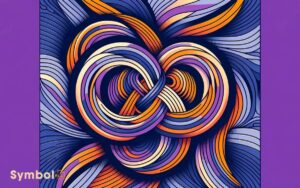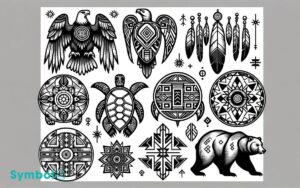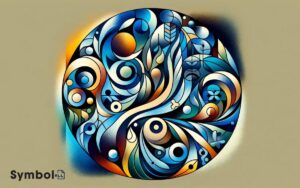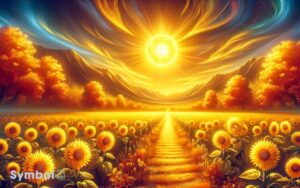Color Symbolism in Film : Full Color Chart!
In film, color choice isn’t just about aesthetics; it’s a meticulous strategy to evoke responses. You’ll find that directors use colors like red for danger or passion, underscoring the emotional weight of scenes.
Blue, in contrast, can soothe or signal isolation, intricately shaping the narrative’s atmosphere.
Yellow, with its warmth, hints at joy or caution, challenging viewers to perceive beyond the obvious. These selections extend beyond the visual, touching on psychological and cultural dimensions, rendering color a powerful tool in cinematic storytelling.
As you explore the nuanced language of color in films, you’ll uncover deeper layers of interpretation, enriching your viewing experience.
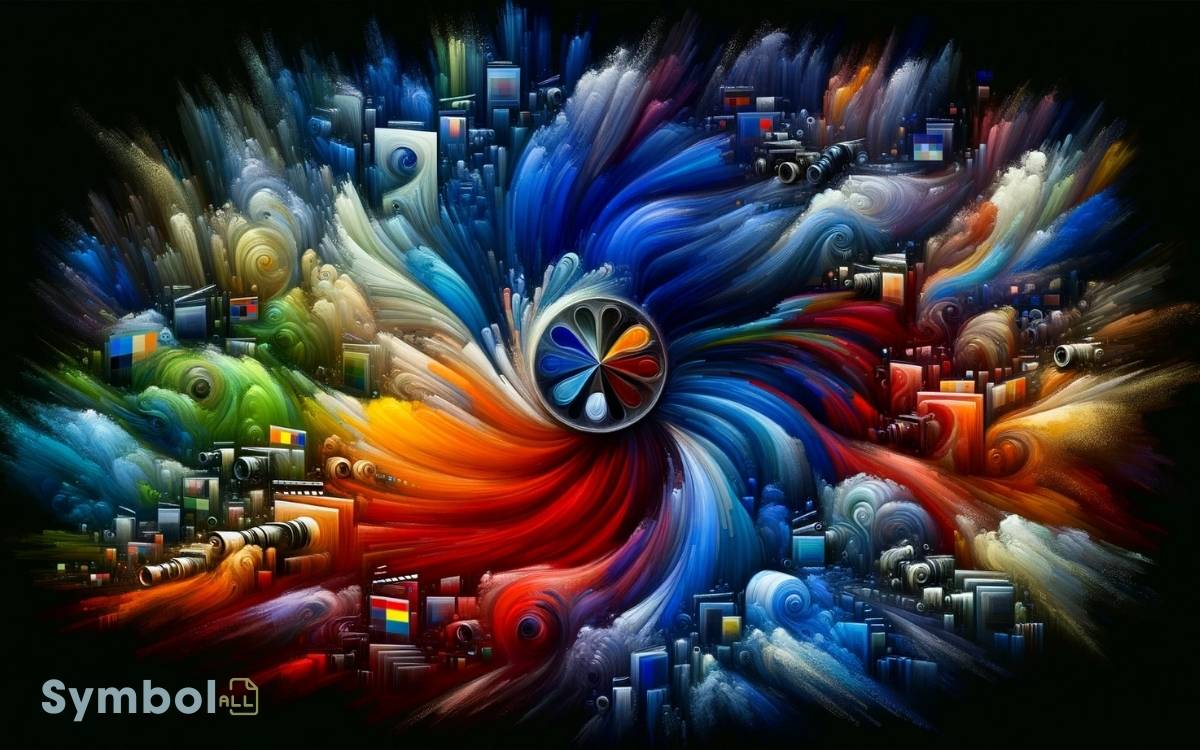
Key Takeaways
12 Color Symbolism in Film Explained
| Color | Symbolism in Film | Common Usage Examples |
|---|---|---|
| Red | Passion, aggression, importance, danger | Hero’s attire, romantic scenes, signaling a warning or threat |
| Blue | Calmness, sadness, isolation, tranquility | Depicting sadness, night scenes, creating a serene atmosphere |
| Green | Nature, envy, growth, rebirth | Showing nature, envy in a character, scenes of starting anew |
| Yellow | Happiness, energy, caution, cowardice | Happy moments, high-energy scenes, cautionary elements |
| Purple | Royalty, wealth, sophistication, mystery | Indicating luxury, introducing enigmatic characters or scenes |
| Orange | Warmth, enthusiasm, vibrancy, health | Sunset scenes, showing vibrancy, healthy family environments |
| Black | Power, elegance, death, evil | Villains, funerals, showing power or sophistication |
| White | Purity, innocence, emptiness, surrender | Weddings, portraying innocence, scenes suggesting surrender |
| Gray | Neutrality, indecision, conformity, dullness | Scenes that are meant to be ambiguous, dull or conforming |
| Brown | Earthiness, stability, simplicity | Rural scenes, stable moments, simple lifestyles |
| Pink | Romance, kindness, playfulness, softness | Romantic scenes, showing kindness or playfulness |
| Silver/Gold | Wealth, high value, futuristic (silver), perfection, idealistic (gold) | Portraying wealth, futuristic elements, ideal situations |
The Language of Color
How does color speak without uttering a single word?
In the domain of film, color is a pivotal tool that communicates themes, emotions, and narrative shifts.
You’ll notice directors meticulously select color palettes to evoke specific responses from you, the viewer.
Red, for instance, often symbolizes passion, danger, or power, drawing your attention to pivotal moments or characters.
Conversely, blue can evoke feelings of calmness or isolation, subtly shaping your perception of a scene’s atmosphere.
This non-verbal communication is essential in filmmaking, as it enhances storytelling without relying on dialogue or action.
Through careful analysis, you’ll discover that each color choice is deliberate, aiming to engage you deeper into the film’s emotional landscape and guide your understanding of the narrative.
Historical Context of Color Usage
Delving into the historical context of color usage in film reveals a rich tapestry of technological advancements and cultural shifts that have shaped its evolution. Initially, color in film was a novelty, painstakingly hand-painted frame by frame or achieved through tinting processes.
As technology progressed, so did the complexity and significance of color in storytelling.
- Black and White Era: Set the stage for understanding contrast and symbolism.
- Technicolor Revolution: Marked a turning point, allowing directors to use color expressively.
- Digital Age Innovations: Enabled unprecedented control over color grading and manipulation.
- Cultural Significance: Colors began to carry specific meanings, influenced by societal changes and global cinema.
Understanding these historical shifts helps you appreciate how color’s role in film has evolved from mere spectacle to a nuanced language of its own.
Red: Passion and Danger
You’ll find that red’s vibrant hue holds a dual significance in film, embodying both the intensity of passion and the immediacy of danger.
This color’s emotional impact is profound, seamlessly shifting from symbolizing deep love to signaling imminent threat within visual storytelling.
Reds Emotional Impact
Red’s emotional impact in film often oscillates between the intensity of passion and the immediacy of danger, reflecting its complex symbolism. You’re drawn into a cinematic world where red isn’t just a color; it’s a narrative tool, loaded with emotional weight.
This duality captivates and keeps you on the edge of your seat, as you navigate through the layers of its meaning.
- Intensifies Emotional Scenes: Amplifies the emotional stakes in pivotal moments.
- Signals Character Development: Marks transformation or pivotal moments in characters’ journeys.
- Creates Atmospheric Tension: Sets a tone that something significant is about to unfold.
- Invokes Deep Symbolism: Engages with the audience on a subconscious level, connecting to our deepest fears and desires.
Understanding red’s impact offers a richer appreciation of the film’s emotional landscape.
Symbolizing Danger and Love
Building on its emotional resonance, red in film simultaneously embodies the extremes of passion and danger, illustrating its profound versatility in storytelling.
You’ll find that directors skillfully employ red to evoke deep emotions, signaling both ominous threats and the intensity of love. This dichotomy allows for nuanced narratives where a single color conveys complex, intertwined feelings and themes.
Analyzing scenes bathed in red, you observe a deliberate choice to highlight pivotal moments, drawing your attention to the underlying tension or the depth of a relationship.
The color’s dual nature enriches the visual language, enabling filmmakers to subtly manipulate your emotional response.
Through red, films communicate the thin line between love’s warmth and danger’s foreboding, demonstrating its unparalleled power in visual storytelling.
Blue: Serenity and Sadness
In cinematic storytelling, the color blue often evokes feelings of serenity and sadness, serving as a powerful tool for exploring complex emotional states.
Its versatility allows filmmakers to investigate the intricacies of their characters’ emotions, creating a visual language that resonates deeply with audiences.
- Depth of Emotion: Blue’s spectrum communicates a wide range of feelings, from the tranquility of a clear sky to the melancholy of a stormy sea.
- Symbolic Contrast: Used alongside warmer colors, blue can highlight a character’s isolation or introspection.
- Cultural Connotations: Across different cultures, blue carries various meanings, enriching the narrative with a global perspective.
- Psychological Impact: Studies suggest blue hues can calm the mind, yet also evoke sadness, adding layers to the viewer’s experience.
This nuanced use of blue enriches film narratives, inviting viewers to explore the depths of human emotion.
Yellow: Happiness and Caution
Frequently, yellow in film symbolizes both the joy and caution that define human experiences, offering a dual perspective that enriches narrative complexity.
You’ll find directors use yellow to evoke a sense of warmth, happiness, and optimism. It’s the color of sunshine, representing life, energy, and essential.
Yet, this same hue carries a warning, signaling caution or even decay. In a detailed analysis, you’ll notice how yellow environments can subtly shift a scene’s mood, from cheerful to foreboding, without a word spoken.
This duality challenges you to look deeper, understanding that joy often coexists with caution.
Analyzing films through this lens, you’ll appreciate the nuanced storytelling and emotional depth that color, specifically yellow, contributes to the cinematic experience.
Green: Envy and Nature
Moving from the vibrant hues of yellow, we now explore the rich symbolism of green, a color that embodies both envy and the essence of nature.
In film, green’s dual symbolism often provides a complex backdrop that can greatly impact a viewer’s interpretation of character motivations and setting.
- Green’s association with envy is deeply rooted in literature and has been expertly leveraged in cinema to underscore characters’ jealousy or desire.
- In contrast, its ties to nature can evoke feelings of rejuvenation, growth, and harmony, offering a serene or hopeful backdrop against the narrative.
- Directors manipulate green’s saturation and hue to navigate its dual meanings, subtly guiding the audience’s emotional response.
- Iconic films often use green to foreshadow plot twists, marrying its natural and envious connotations to deepen storytelling.
This color’s versatility in film underscores its power to convey complex, multifaceted themes.
Black: Mystery and Death
Delving into the depths of color symbolism, you’ll find that black, often associated with mystery and death, plays a pivotal role in shaping a film’s thematic essence and emotional landscape.
When filmmakers opt to use black prominently, they’re not just choosing a color; they’re invoking a wealth of connotations that can deeply influence the viewer’s perception and emotions.
Black can envelop scenes in an air of mystery, shrouding characters or settings in secrecy that beckons the audience to lean in closer. It’s also the harbinger of death or the end, not just in the literal sense, but metaphorically, signaling the demise of ideas, relationships, or innocence.
This dual symbolism allows black to weave complex narratives, guiding audiences through the intricate dance of understanding a film’s deeper meanings.
White: Purity and Isolation
In the domain of cinematic storytelling, white often embodies purity and isolation, serving as a powerful tool to convey complex themes and character emotions. This hue, devoid of distraction, can singularly focus the viewer’s attention on the intended message.
- White costumes can symbolize a character’s innocence or moral superiority.
- Stark, white settings often isolate characters, emphasizing their emotional or physical detachment.
- The use of white lighting can create an ethereal atmosphere, hinting at a character’s purity or divine connection.
- Conversely, an overabundance of white may signify sterility or coldness, hinting at a hidden void within.
Orange and Its Dual Meanings
You observe that the color orange embodies a fascinating dichotomy in film, serving as a symbol for both warmth and danger. Its presence on screen can simultaneously evoke feelings of comfort and unease, highlighting the complexity of human emotions and conflicts.
Through careful analysis, you’ll uncover how directors utilize this dual nature to enrich narratives, guiding viewers through a spectrum of experiences.
Orange in Conflict
Orange often embodies the duality of warmth and caution, representing both harmony and hazard in cinematic narratives.
This unique color’s presence in film scenes can subtly suggest underlying conflicts or changes, engaging the audience’s subconscious and emotional responses.
- Symbolic Dichotomy: Orange signals both a sense of comfort and a prelude to tension, enriching the narrative’s complexity.
- Visual Foreshadowing: Utilized to hint at upcoming discord or upheaval, preparing viewers for emotional shifts.
- Character Development: Characters associated with orange may undergo significant alterations, reflecting their inner turmoil or growth.
- Environmental Storytelling: Orange settings or lighting can denote a place of conflict or transformation, influencing the story’s mood without explicit dialogue.
Understanding orange’s role enhances your appreciation of the film’s deeper themes and directorial choices.
Warmth Vs. Danger
Exploring the dual meanings of orange in film reveals a complex interplay between warmth and danger, engaging the viewer’s deeper perceptions and emotions.
This vibrant hue, when employed by filmmakers, doesn’t just fill the screen with a visually stimulating color; it envelops you in a narrative dichotomy.
On one hand, orange evokes feelings of comfort, warmth, and sociability think of scenes bathed in the golden hour’s light, where characters share intimate moments.
Conversely, it signals caution, hazard, and tension, much like a sunset forewarning the darkness. This juxtaposition isn’t accidental but a deliberate choice to deepen the narrative fabric.
You’re not just observing characters navigate their worlds; you’re being subtly guided to feel the undercurrents of their journeys, where warmth often coexists with danger, enriching the film’s emotional landscape.
Purple: Royalty and Fantasy
In cinema, the color purple often signifies royalty and fantasy, embodying a domain where tradition intersects with the extraordinary. This majestic hue carries a rich legacy, inviting viewers into worlds that blend the regal with the mystical.
Its usage is both deliberate and nuanced, fostering a deeper connection to the narrative through visual storytelling.
- Purple’s association with nobility can highlight a character’s status or aspirations.
- In fantasy settings, it suggests the presence of magic or otherworldliness.
- Its rarity in nature makes it an ideal choice for signifying something unique or significant.
- The color can also evoke a sense of mystery, hinting at hidden depths or secrets.
Understanding purple’s symbolism enriches your appreciation of a film’s artistic choices, revealing layers of meaning that might otherwise go unnoticed.
The Psychology Behind Color Choices
You must understand that filmmakers meticulously select colors to evoke specific emotions, thereby impacting the viewer’s psychological state. This choice directly influences audience engagement, as colors can attract attention, set a mood, or even alter perception.
Analyzing these decisions reveals the complex interplay between color symbolism and emotional resonance within cinematic storytelling.
Emotional Impact of Colors
Colors deeply influence human emotions, guiding filmmakers in their strategic choices to evoke specific feelings and reactions from the audience.
- Red: Often employed to signify passion, anger, or danger, red can heighten scenes with intense emotions or signify pivotal turning points.
- Blue: This color is used to create a calming, serene atmosphere, often reflecting scenes of contemplation or sadness.
- Yellow: Associated with joy, optimism, and sometimes madness, yellow can inject vibrancy into a scene or unsettle the audience with its brightness.
- Green: Symbolizing nature, envy, or sickness, green is versatile, capable of grounding a scene in reality or distorting it with unease.
Analyzing these colors reveals their potential to manipulate viewer emotions, illustrating the profound impact of color choices on film storytelling.
Colors and Audience Engagement
Delving into the psychology behind color choices reveals how filmmakers engage audiences, leveraging hues to shape viewers’ emotional and cognitive experiences.
You’ll find that directors and cinematographers meticulously select colors to evoke specific responses, understanding that colors aren’t just aesthetic choices but powerful tools for storytelling.
Red, for instance, can signal danger, passion, or anger, compelling you to feel the intensity of a scene.
Blue, on the other hand, might calm you or convey a sense of melancholy. This strategic use of color not only enriches the narrative but also subtly guides your emotional journey through the film.
It’s a reflection of the filmmaker’s craft, manipulating color to make sure you’re not just a passive observer but an emotionally invested participant.
Color and Character Development
In the domain of character development, filmmakers strategically employ color to reveal the psychological nuances and evolutionary arcs of their characters.
You’ll find that this technique isn’t arbitrary; it’s a thoughtfully curated aspect of visual storytelling that deepens your understanding of the narrative.
- Red: Often symbolizes passion, anger, or danger, indicating a character’s intense emotions or pivotal moments of change.
- Blue: Can denote calmness, sadness, or isolation, providing insight into a character’s internal struggles or moments of reflection.
- Green: Frequently associated with envy, greed, or growth, hinting at a character’s motivations or transformations.
- Yellow: May represent optimism, madness, or deceit, subtly indicating shifts in a character’s perception or reality.
Lighting, Color, and Mood
Through the meticulous integration of lighting and color, filmmakers craft atmospheric moods that greatly influence your emotional response to the story.
This intentional manipulation extends beyond mere aesthetics; it explores the psychological, subtly guiding your perception and feelings.
The interplay between shadow and light, coupled with the intentional choice of color palettes, can evoke tension, serenity, or despair.
For example, dim lighting combined with cool blue hues might convey a sense of melancholy or detachment, whereas warm, soft lighting with vibrant colors often suggests intimacy or joy.
This nuanced approach allows directors to envelop you in the narrative, ensuring that the visual experience complements the storyline. Understanding this dynamic enriches your viewing experience, revealing layers of meaning that might otherwise remain unnoticed.
Symbolic Color in Genre Films
You’ll find that genre films exploit color symbolism to evoke specific emotional responses and thematic resonances. This technique allows filmmakers to visually communicate underlying messages without relying solely on dialogue. For instance, the use of red often signifies passion, danger, or love, while blue can evoke calmness, sadness, or isolation, depending on the context. By mastering color symbolism in movies, directors create immersive worlds that subtly guide viewers’ emotions and deepen the impact of the story.
In horror, the pervasive use of red not only signifies blood and danger but also taps into deeper fears, serving as a visual cue for the audience’s primal anxieties.
Conversely, fantasy films often utilize ethereal blues to create a sense of otherworldliness and serenity, guiding viewers into domains beyond their imagination.
Horrors Red Menace
Red often seeps into horror films as a harbinger of danger, embodying the genre’s most primal themes of blood, death, and fear. You’ll notice that this vibrant color isn’t just a backdrop; it’s a critical narrative tool, meticulously employed to evoke visceral reactions.
Analyzing its use offers deeper insight into a film’s thematic underpinnings and emotional landscape.
- Blood and Violence: Red symbolizes the physical manifestation of violence, enhancing the realism of gore and injuries.
- Psychological Terror: It triggers a subconscious alarm, heightening tension and unease.
- Symbolic Threat: Often represents the presence of evil or supernatural menace lurking.
- Visual Contrast: It draws viewers’ attention to significant details, marking them as pivotal moments within the storyline.
Understanding red’s application in horror deepens your appreciation for the genre’s intricate craftsmanship.
Fantasys Ethereal Blues
In fantasy films, the ethereal shades of blue not only craft a visually stunning palette but also symbolize a range of profound themes from serenity to mysticism.
You’ll notice that these blues often enfold scenes of deep contemplation or the revelation of hidden domains, acting as a bridge between the known and the unknown.
This color’s versatility allows it to represent both the tranquility of water and the vastness of the sky, evoking a sense of infinite possibility.
Additionally, blue’s association with wisdom and intuition highlights characters’ internal growth or their connection to magical elements within these narratives.
Analyzing these hues, you gain insight into the filmmaker’s intention to not just tell a story but to immerse you in an experience that transcends the ordinary, crafting worlds where the mystical becomes tangible.
Analyzing Color in Iconic Scenes
Analyzing iconic scenes across various films reveals how directors adeptly use color to convey deeper meanings and emotions, engaging the viewer’s psychological response.
To deepen your understanding, consider these facets:
- The strategic use of red in Schindler’s List emphasizes the innocence and tragedy of a single character amidst widespread desolation.
- Blue tones in Amélie enhance the whimsical, yet introspective nature of the protagonist, inviting viewers into her inner world.
- The pervasive use of green in The Matrix signals the artificiality of the digital domain, contrasting sharply with the bleak real world.
- In The Grand Budapest Hotel the pastel color palette crafts a nostalgic yet vibrant atmosphere, reflecting the film’s blend of comedy and melancholy.
These examples illustrate how color functions as a powerful storytelling tool, subtly shaping our perception and emotional engagement with the film.
Conclusion
As you’ve journeyed through the vibrant tapestry of color symbolism in film, you’ve uncovered the intricate dance of hues that shape our cinematic experiences.
From the fiery embrace of red signaling passion and peril to the tranquil blues that whisper of serenity and sorrow, each color weaves its own narrative.
Through the analytical lens, you’ve seen how directors paint emotions, mold characters, and set the mood, transforming mere scenes into visual poetry.
This exploration reveals the profound impact of color, illuminating its power to enchant and evoke.

